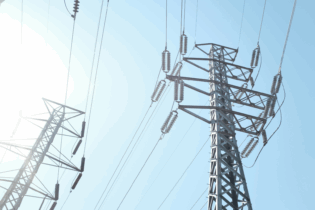A panel discussion Tuesday on how utilities can use technology to improve customer service and ultimately drive revenue, showed it may not be as clear cut for utilities like Eskom.
Despite being at the forefront on technological innovation compared to the rest of the continent, a deeply entrenched culture of non-payment along with mistrust and general negative public perceptions of the power utility Eskom are some of the factors that can be singled out as stumbling blocks in how Eskom can capitalise on this link between improved customer service and revenue. Experts explored utility digitalisation during a session on Smart Energy as part of the African Utility Week and POWERGEN Africa conference and exhibition in Cape Town. It is generally understood that technology and innovation can on the one hand enhance customer interaction and so drive revenue. Panellists included chief driving officer of the Nigerian Kano Electricity Distribution Company Ravindra Joshi, industry value advisor for SAP Middle East and North Africa Slawomir Klimowicz, Eskom programme lead on Advanced Analytics Dileep John and executive director of Jomat Investment Jodie Sherwin Hill. They premised the discussion on digital transformation in utilities from a customer centric perspective. One of the questions under discussion was what utilities should keep in mind as they transform and journey into the future pushing for customer service delivery to drive revenue. Klimowicz said it is not enough for utilities to just deliver a service and push for revenue anymore. “Customers want more. They want a better experience of utilities and not just the commodity like water or power. I would say the future is one where there is contact with customers – where customers have access to consumption data, to services and get advisories from utility companies. This future comes with mobile applications and social media and a younger generation of consumers.” John also acknowledged that how customers interact with the utility needs to change significantly.“It is about how you interact with your customer and their information needs. So, if the customer interacts with you on Twitter, you must be able to respond on Twitter.”
But not all facets of smart energy mechanisms necessarily get automatic consumer buy-in. John referred to the prepaid electricity meters in Soweto that was met with significant community resistance. According to Sherwin Hill, it is important to learn and know customers before you present them with a product. “And most of the time we make assumptions and go into communities guessing. So, the product we offer is not what they are looking for and it then becomes very reactive and customers do not want to pay.” She said there are better results also in keeping customers involved if utilities do their homework first and find out what individuals and the communities value most. But according to John this exercise can get expensive and time-consuming and utilities like Eskom often cannot partake in drawn out engagements. He said Eskom is trying to do a behaviour change campaign in certain communities where there is the need to “win the heart of people to ensure payment. But it is not easy.” According to him the utility is “caught between a rock and a hard place” especially with resistance to smart metering and will most likely need government intervention. John also acknowledged there is a public perception crisis with Eskom and general mistrust. These perceptions are driven by many things like load shedding but there is also an existing and well entrenched culture of non-payment that the utility is wrestling, he explained. “So, we need to get the message across that without this revenue we cannot fund the supply, we cannot fund customer service delivery and any network improvements in the future. It is like a vicious cycle.”







